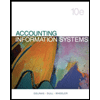
Internal Control: Internal control refers to the policies, and plans of the business organization along with other measures with a view to safeguard its assets, encourage the employees to adhere to the plans, to improve on the operational efficiency, and to ensure correct and reliable accounting information. Internal control is a process which ensures continuous reliability of accomplishment of a company’s objectives, related to operations, financial reporting, and in conformity with laws and regulations.
Five elements of internal control:
- Control Environment: Control Environment refers to the attitude of top brass of the company or the corporate culture. The top brass of the company must set the tone to improve the morale for rest of the employees of the business.
- Risk assessment: The business must be able identify the risk associated with it, and accordingly use the internal control to safeguard its assets and ensures fairness in presentation in accounting information.
- Control procedures: The objective of setting the control procedure is to ensure that the business achieves its objectives.
- Monitoring controls: The internal control used in the business is being monitored by the internal auditors who are hired by the business, to ensure that the employees are adhering to the policies of the business and running the operations efficiently. The external auditors on the other hand ensures that the business accounting records are being maintained in accordance with the Generally Accepted Accounting Principles (GAAP).
- Information and communication: Information and communication system is important for a business and hence only authorized persons should be allowed the access to the confidential accounting information. Approvals are also should be made mandatory for the transactions by the
control system.
To suggest: Appropriate control procedures for preventing / detecting the theft of cash.
Trending nowThis is a popular solution!

Chapter 8 Solutions
Bundle: Accounting, 27th Edition, Loose-leaf Version + Cengagenowv2, 1 Term Printed Access
- Nicholas Johnson is a single individual. He claims a standard deduction of $13,500. His salary for the year was $156,800. What is his taxable income? a. $105,698 b. $143,300 c. $122,750arrow_forwardI need help finding the accurate solution to this financial accounting problem with valid methods.arrow_forwardOn December 31, Swift Sports decided to sell one of its pitching machines. The initial cost of the equipment was $265,000 with accumulated depreciation of$178,000. Depreciation has been taken up to the end of the year. The company found a buyer willing to purchase the equipment for $42,000. What is the amount of the gain or loss on this transaction?arrow_forward
- Please explain the solution to this general accounting problem with accurate explanations.arrow_forwardKL Manufacturing produces a single component for sale. The component sells for $25 per unit. Fixed costs are $1,850,000 annually. Production and sales of 750,000 units annually result in profit before taxes of $3,400,000. What is the unit variable cost?arrow_forwardPlease provide the answer to this financial accounting question with proper steps.arrow_forward
 Survey of Accounting (Accounting I)AccountingISBN:9781305961883Author:Carl WarrenPublisher:Cengage LearningBusiness Its Legal Ethical & Global EnvironmentAccountingISBN:9781305224414Author:JENNINGSPublisher:Cengage
Survey of Accounting (Accounting I)AccountingISBN:9781305961883Author:Carl WarrenPublisher:Cengage LearningBusiness Its Legal Ethical & Global EnvironmentAccountingISBN:9781305224414Author:JENNINGSPublisher:Cengage Pkg Acc Infor Systems MS VISIO CDFinanceISBN:9781133935940Author:Ulric J. GelinasPublisher:CENGAGE L
Pkg Acc Infor Systems MS VISIO CDFinanceISBN:9781133935940Author:Ulric J. GelinasPublisher:CENGAGE L Financial Accounting: The Impact on Decision Make...AccountingISBN:9781305654174Author:Gary A. Porter, Curtis L. NortonPublisher:Cengage Learning
Financial Accounting: The Impact on Decision Make...AccountingISBN:9781305654174Author:Gary A. Porter, Curtis L. NortonPublisher:Cengage Learning




